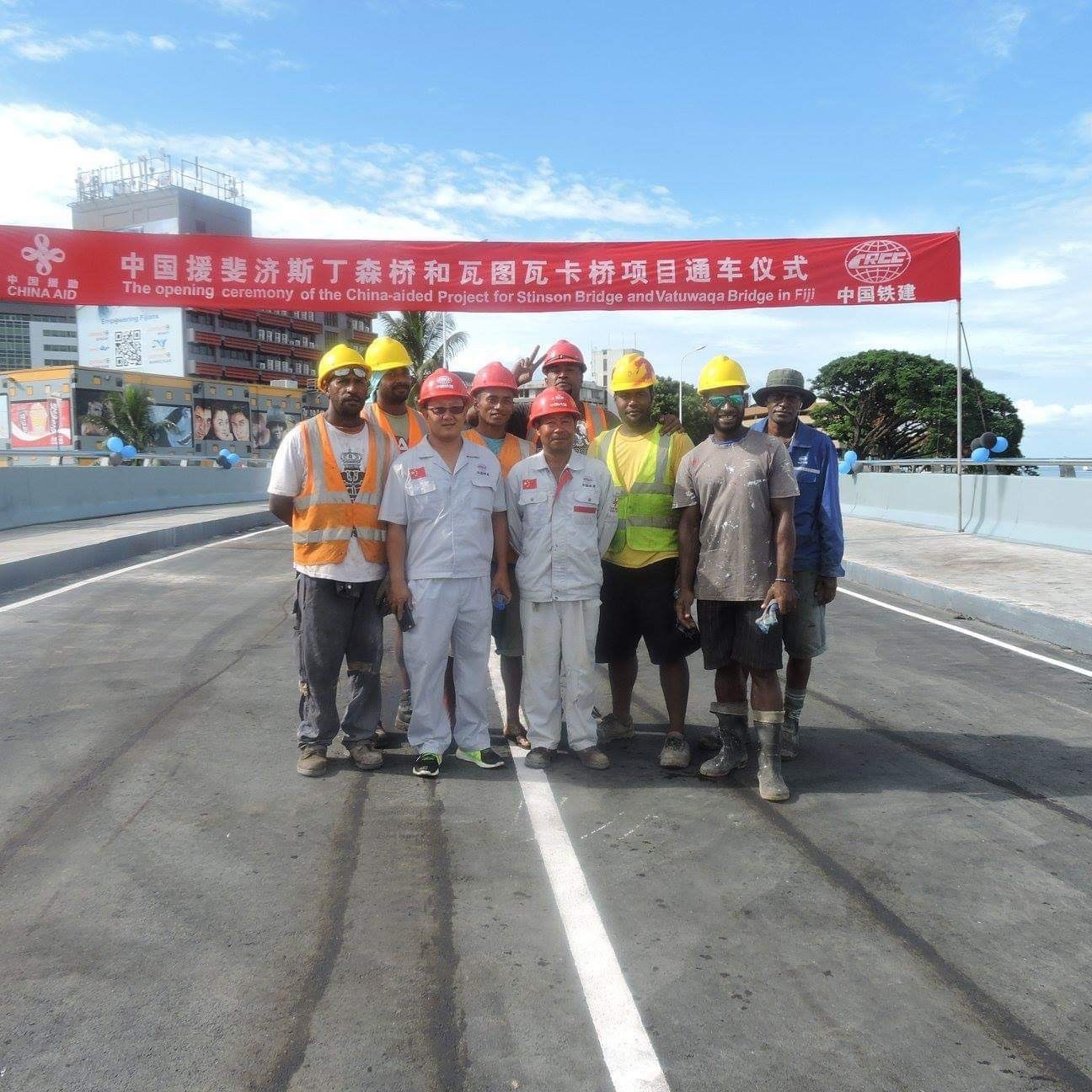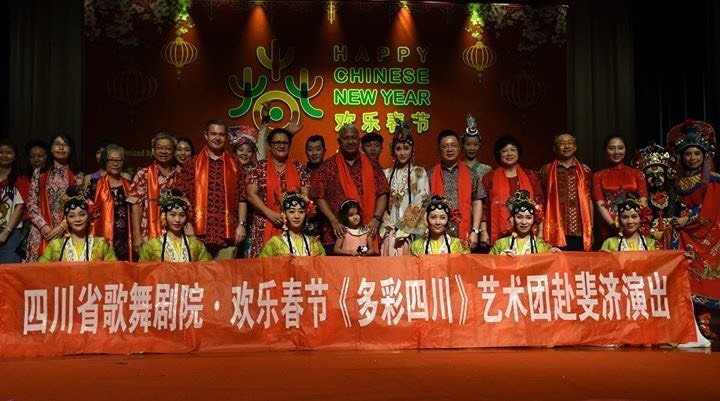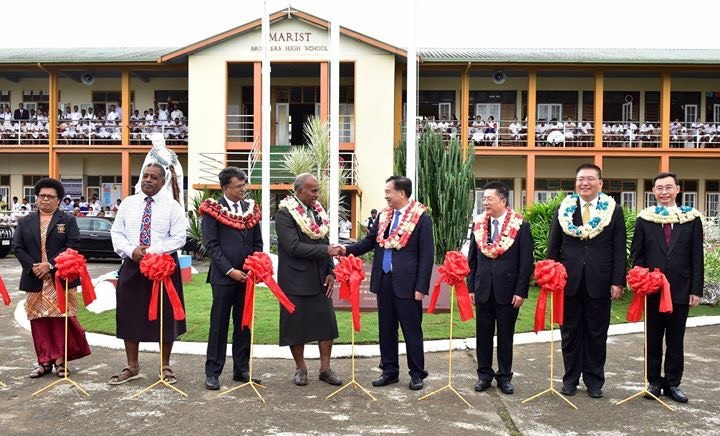
Opinion
07:59, 21-Apr-2019
My story: BRI-Breathing new hope in Fiji
Lesieli Fonua Talei

Editor's note: The 2nd Belt and Road Forum for International Cooperation will be held in Beijing at the end of this month. Over the past six years, we have heard many voices – mostly political and economic ones, about BRI. But we wanted to also hear from ordinary people who have experienced BRI for themselves. Over 100 people took part in our "CGTN Belt and Road Essay Contest," and we selected the 18 best stories. Here is one of our second-prize winners. The article reflects the author's opinions and not necessarily the views of CGTN.
A joyful crowd gathered in the Suva Municipal Market as Fijian Prime Minister Voreqe Bainimarama cut the red ribbon to open the much-anticipated Stinson Parade Bridge in early January 2018.
The original deteriorating bridge had been closed for six years, leaving many vendors, citizens and tourists battling against unbearable traffic congestion and market suffocation.
At the opening ceremony, Fijians could not hide their joy and relief. The reopening of the bridge means less traffic time, on-time arrival at the market for both vendors and their customers, and more quality time people to be spent at home with their loved ones.

The opening ceremony of the Chinese-aided project for Stinson bridge and Vatuwaqu bridge in Fiji. /Courtesy of Lesieli Fonua Talei.
The opening ceremony of the Chinese-aided project for Stinson bridge and Vatuwaqu bridge in Fiji. /Courtesy of Lesieli Fonua Talei.
Freeing up traffic congestion and providing smooth travel as well as daily commuting to and from the city, might mean little to outsiders, but to Fijians it is everything.
The bridge has made roads safer for drivers and ensured that the entire area becomes far more accessible for passers-by, and given Fijians living in Lami, and beyond, access to the capital city, Suva, like never before.
Located in the center of the central business district, the bridge is accessed by bus drivers, minivan drivers, market vendors, school students and people from all walks of life.
A few minutes from the city, the newly upgraded Vatuwaqa Bridge was also opened on the same day allowing access to Nasinu, the most populated municipality in Fiji.
With a combined funding of 30 million U.S. dollars, the projects were made possible with the assistance of the Chinese government under the Belt and Road Initiative (BRI).
Fiji became a signatory to the BRI last year with focus on strengthening connectivity in policy coordination, facilities connectivity, enhanced trade and investment, financial coordination and people-to-people bonding.

Chinese New Year celebration in Fiji. /Courtesy of Lesieli Fonua Talei.
Chinese New Year celebration in Fiji. /Courtesy of Lesieli Fonua Talei.
BRI further strengthened more than four decades of diplomatic ties between China, the world's second largest economy, and Fiji, the geographic and socio-economic hub of the South Pacific.
Development in the island nation of more than 800,000 people has seen steady growth in recent years, in part due to the assistance provided by China.
Multi-million-dollar projects sponsored under the BRI also include the redevelopment of the Suva Civic Centre Auditorium and construction of a state-of-the-art sports facility for Marist Brothers High School.
Through the initiative, China has also trained 149 Fijians over the last two years in women's empowerment, youth development, climate change, agriculture, education, media, health, fishery, human resources management and information technology.
These projects are testament to the popularity of the BRI, announced in 2013 by Chinese President Xi Jinping.
The BRI provides a lifeline to modern, growing and ambitious countries that aspire to achieve regional and global prominence through infrastructure development and trade.
At this year's Chinese New Year celebrations in Fiji, Prime Minister Bainimarama acknowledged the Chinese-Fijian community as an invaluable partner in the country's record-breaking economic growth and development.
With BRI one does not have to look far to see policies and plans come to fruition.

Marist Brothers High School is a project sponsored under the BRI. /Courtesy of Lesieli Fonua Talei.
Marist Brothers High School is a project sponsored under the BRI. /Courtesy of Lesieli Fonua Talei.
For a country like Fiji which is world renowned as a holiday destination, infrastructure development through BRI helps to meet the growing demands of tourism.
China-Pacific Friendship Association President Hiria Ottino mentioned at a panel discussion at this year's Boao Forum for Asia that 2019 has been dubbed as China Pacific Tourism Year.
Since Fiji is already operating a direct flight to Hong Kong, there must be plans to open more direct flights from the Chinese mainland to the Pacific.
The Pacific China Development Initiative will run from 2019 to 2023 with the aim of preparing the Pacific to be China-ready and China to be Pacific-ready.
The initiative will also examine the need to sustainably develop and promote the Pacific in niche market segments in China.
Regardless of the criticism some may have about the BRI, it is a great initiative designed for the betterment of mankind.
Hats off to the Chinese government for bringing hope to a tiny island country in the Pacific.
(The author is a journalist from Fiji. If you want to contribute and have specific expertise, please contact us at opinions@cgtn.com.)

SITEMAP
Copyright © 2018 CGTN. Beijing ICP prepared NO.16065310-3
Copyright © 2018 CGTN. Beijing ICP prepared NO.16065310-3